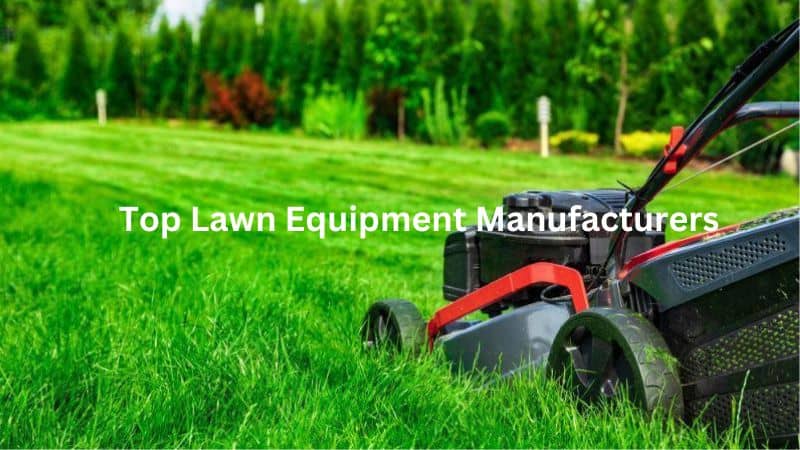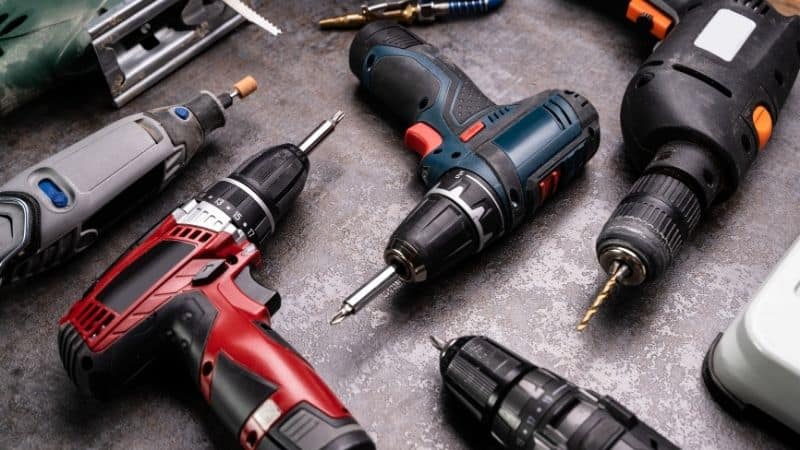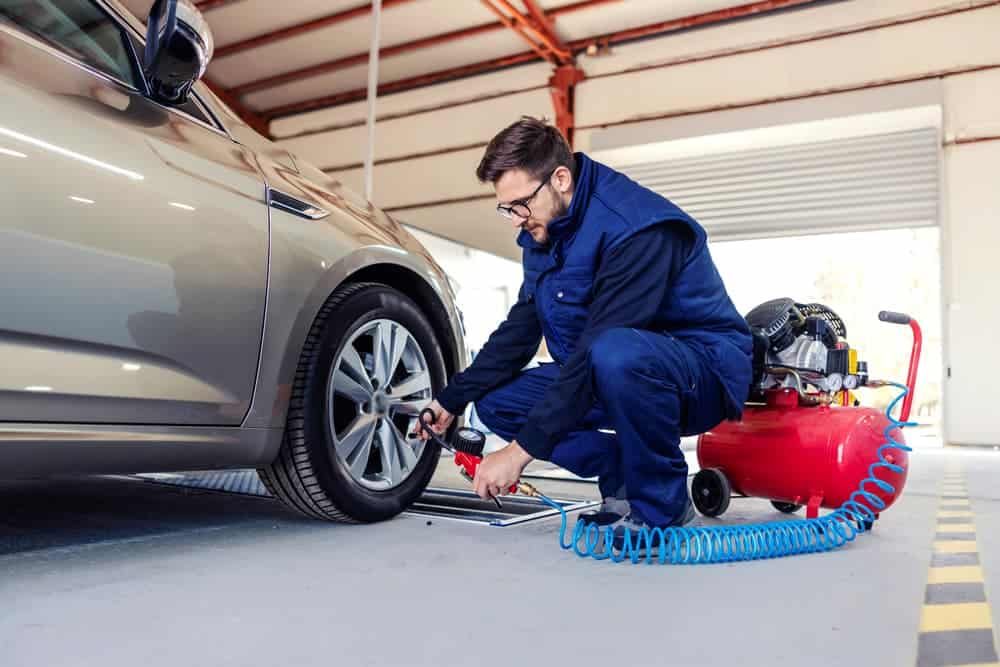Key Takeaways
- Regular cleaning and maintenance of power tools is crucial to extend their lifespan, enhance performance and safety, and prevent issues like premature wear, rust, and clogged vents.
- In this article, we recommend first unplugging tools and taking safety precautions like wearing gloves. Basic cleaning involves dusting, vacuuming, wiping surfaces, and using compressed air to dislodge debris. Deep cleaning maintains smooth operation via rust removal, lubricating moving parts, careful reassembly, and testing.
- Following schedules for thorough cleaning while also addressing any signs of wear is optimal.
- This article suggests handy products for cleaning and emphasizes mild cleaners first to avoid damage.
- Overall, the small time investment in power tool care prevents larger problems.
The Importance of Cleaning Your Power Tools
Making power tool cleaning and maintenance a regular habit pays dividends by extending the usable life of your tools, making them safer to operate, and boosting their performance on job sites. The small time investment helps prevent larger issues down the road. There are several key reasons why properly cleaning your power tools is important:
- Extends tool life and functionality: Allowing dust, debris, and grime to build up on power tools can lead to premature wear of moving parts, clogged intakes/exhausts, rust, and corrosion over time. Regular cleaning tools help remove these contaminants and allow the tools to function properly for longer.
- Enhances performance: Dust and dirt can hinder a power tool’s mechanical performance. Cleaning helps keep all the parts moving smoothly and efficiently. Proper lubrication after cleaning also aids performance
- Improves safety: Buildup near vents/intakes can cause a tool to overheat and pose fire/shock hazards. Keeping tools clean minimizes these risks. It also keeps handles, switches, etc, clean for better grip and control.
- Makes inspection and maintenance easier: Clean tools make it simpler to spot signs of wear and tear during routine inspections. You can then perform preventative maintenance like lubricating parts, replacing filters, etc before major issues occur.
- Promotes regulatory compliance: Some industries require equipment to be kept clean to comply with safety regulations.
After realizing the importance of cleaning your power tools, now let’s delve into the following essential tips on how to clean your power tools. Find your best way to clean power tools!
Safety and Preparation for Cleaning Power Tools
Before diving into the nitty-gritty of power tool maintenance, take these essential steps to ensure your safety and efficiency. Proper preparation streamlines the cleaning process and minimizes risks.
Initial Safety Checks
- Inspect the power tool: Ensure that it is fully switched off and unplugged. This not only prevents the tool from turning on accidentally but also protects you from electric shocks.
- Wear appropriate protective gear: Donning safety glasses and gloves should be non-negotiable. These will protect your eyes from debris and your hands from sharp edges and harmful chemicals.
Gathering Essential Supplies
- Cleaning agents: Get appropriate cleaners like a degreaser for grimy parts and a rust remover for any corroded surfaces.
- Tools for cleaning: Prepare a set of tools including a soft brush, microfiber cloths, and possibly compressed air for blowing out dust from hard-to-reach places.
Basic Cleaning Techniques
Maintaining your power tools involves routine cleaning to keep them in optimum working condition. Dust and debris are the main culprits affecting performance and longevity. Proper cleaning extends the life of your power tools and ensures they operate efficiently.
Dusting and Vacuuming
Before you use liquids or apply any cleaners, eliminate loose dust and debris. A soft-bristle brush can gently sweep away particles from the tool’s surface and harder-to-reach crevices. Following the brushing, utilize a shop vacuum with a nozzle attachment to remove dust from vents, internal components, and any moving parts. Compressed air is another effective method to dislodge dust and dirt; a few short bursts can push out debris without damaging delicate internals.
Wiping and Scrubbing
Once dusting and vacuuming are complete, move on to wiping down the external surfaces. Using a damp cloth, clean the tool’s housing to remove any remaining grime. It’s important to select a cloth that is only slightly moist to prevent water from seeping into sensitive areas. For stubborn dirt, apply a mild detergent on the cloth, or use a specialized cleaning solution for power tools. Following any liquid cleaning, ensure a dry cloth is used to eliminate any moisture that could lead to rust or corrosion.
Deep Cleaning and Maintenance
Deep cleaning and maintaining your power tools is essential to ensure they operate efficiently and last longer. This process involves thorough cleaning, rust removal, adequate lubrication, and careful reassembly to maintain performance.
Removing Rust and Corrosion
When tackling rust and corrosion, you’ll want to start by inspecting any metal parts, such as blades and vents. For light rust, use a cloth dipped in a vinegar solution to clean the affected areas. For more stubborn rust, apply a specialized rust remover gently with a wire brush and wipe clean. After rust removal, applying a corrosion protector will help prevent future rusting.
Ingredients for Vinegar Solution:
- 1 part vinegar
- 1 part water
Lubricating Moving Parts
To maintain the smooth operation of your power tools, focus on lubricating moving parts. First, ensure the tool is unplugged and clean. Then, apply a suitable lubricant sparingly to any moving parts, such as hinges or gears, to reduce friction. Be cautious not to over-lubricate, as this can attract dirt.
Lubrication Checklist:
- Hinges
- Gears
- Blades
- Any other moving components
Reassembling and Testing
After cleaning and maintenance, cautiously reassemble your power tool, ensuring each piece is correctly fitted. Once reassembled, it’s critical to test the tool, preferably in a safe, controlled environment, to confirm that it is operating as expected. Pay attention to any unusual noises or movements that could indicate improper assembly or a need for further maintenance.
Caring for Power Tool Components
Maintaining the different parts of your power tools is essential to their longevity and performance. Paying special attention to blades, cords, batteries, filters, and other components will prevent unnecessary wear and ensure that your tools function at their best.
Handling Electrical Components
When dealing with electrical parts such as cords, battery connections, and drill bits, first ensure that your tool is disconnected from any power source. Check the cords for any signs of wear or damage and replace them if necessary to prevent electrical hazards. For battery-powered tools, keep the connections clean and free from debris to ensure efficient energy transfer. Use a dry cloth to clean the battery terminals, and store your batteries in a cool, dry place to preserve their lifespan.
Cleaning Air Filters and Vents
Air filters and vents are crucial for preventing overheating and maintaining the performance of your power tools. To clean these areas:
- Air Filters:
Detach the filter according to the manufacturer’s instructions.
Gently remove any visible debris with a soft-bristle brush.
If the filter is washable, rinse it with warm water and allow it to dry completely before replacing.
- Vents:
Use canned air or a low-powered air compressor to blow out dust from the vents.
For deeper cleaning, use a vacuum with a brush attachment to carefully suction out the dust without damaging the vent slats.
Regular maintenance of belts and bearings is also important. Keep belts at the correct tension and replace them if they show signs of cracking or wear. Bearings should be lubricated according to the manufacturer’s specifications to avoid friction and wear. Remember to keep small components like bolts, screws, and Allen wrenches organized and in good condition to make maintenance easier and more effective.
Optimizing Tool Performance and Longevity
Ensuring that your power tools are properly maintained is crucial for enhancing both their performance and lifespan. By setting regular cleaning schedules and promptly addressing wear and tear, you can keep your tools functioning at their best.
Regular Cleaning Schedules
To maintain tool efficiency, establish a cleaning frequency that matches your usage. If you engage in frequent projects, weekly cleaning may be necessary. Vacuuming dust and debris from power tools is a cornerstone of good maintenance, particularly for tools that are often used with wood, where sawdust can accumulate. For metal tools or parts exposed to grit, using a wire brush can prevent corrosive buildup.
In addition to routine cleanups, check for any signs of overheating after extensive use. Overheating can be a sign that the tool needs a break or that internal components need to be cleaned to prevent damage. Use compressed air to clear out vents and fans, and a soft-bristle brush for delicate components.
Handles and rubber grips should be wiped with a clean, dry cloth, and if they begin to wear down, it’s important to replace them to maintain a secure grip.
Addressing Wear and Tear
Inspect power cords for fraying or damage every month and fix or replace them to avoid electrical hazards. For moving parts, apply a suitable lubricant to keep them moving smoothly and protect against rust.
Keep cutting tools, like blades and drill bits, sharp to ensure efficient cutting and reduce strain on the motor. Use a sharpening stone or tool-specific sharpener depending on the tool’s requirements.
It’s also important to take proper precautions when replacing parts. Always ensure the tool is completely switched off and unplugged before beginning any repairs to avoid accidents. In case rubber components are degraded, replace them promptly to ensure the safety and effectiveness of your tool’s grip and handling.
By diligently following these guidelines, you can significantly extend the lifespan of your power tools and ensure they perform optimally for each project. Remember, investing time in regular cleaning and maintenance now can save you from costly repairs or replacements in the future.
Frequently Asked Questions
What is the recommended procedure for removing grease from power tools?
To remove grease from your power tools, apply a mild detergent or degreaser to a soft cloth and gently wipe away the residue. Ensure the tool is disconnected from any power source before this cleaning step. For stubborn grease, you can refer to expert guidelines like those found in How to Clean Power Tools.
What cleaning agents are safe and effective for maintaining cordless power tools?
Use mild dish soap or a specialized cleaner designed for electronics when cleaning cordless power tools to avoid damaging sensitive components. Always refer to the manufacturer’s recommendations.
How should one go about cleaning battery terminals on power tools?
To clean battery terminals, first ensure the battery is removed and the tool is turned off. Use a cotton swab dipped in isopropyl alcohol to rub away corrosion or buildup. Dry thoroughly before reattaching the battery.
Are there any specialized cleaning sprays for power tools, and how should they be applied?
Yes, there are specialized cleaning sprays available, which should be sprayed onto a lint-free cloth before wiping your tool. Avoid spraying directly onto the tool to prevent moisture from reaching the internal components. Detailed steps can be found in guides like How to Clean Power Tools: A Complete Step-by-Step Guide.
What preventive measures can be taken to maintain power tools in a clean condition?
To prevent dirt accumulation, store tools in a clean, dry place and use protective covers. After use, wipe them off with a damp cloth and occasionally lubricate moving parts as necessary. Periodically, deep clean to maintain optimal function.
How often should power tools be cleaned for optimal performance and longevity?
Clean power tools after each use to remove debris and dust, and perform a thorough cleaning every few months, depending on the frequency of use. Regular maintenance ensures the tools work efficiently for longer.






